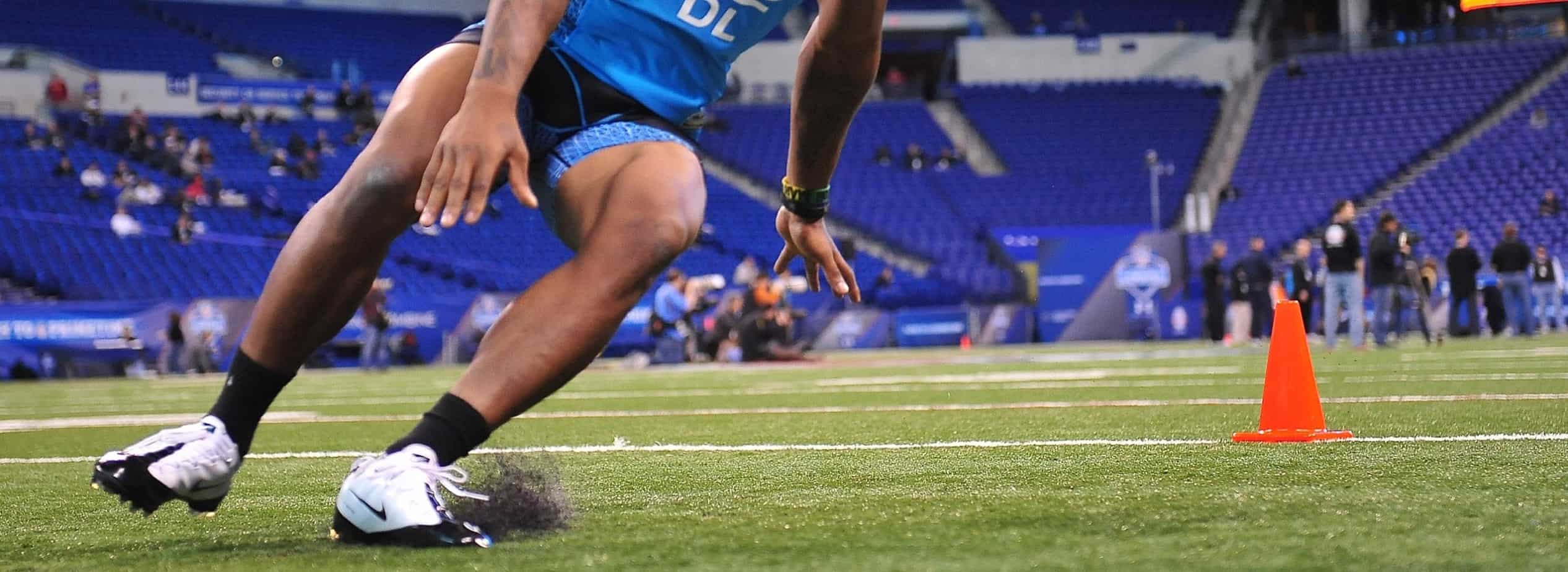Which has a stronger relationship to change of direction, a vertical or horizontal force-velocity profile?
Your weekly research review
- Background & Objective
- What They Did
- What They Found
- Practical Takeaways
- Reviewer’s Comments
- About the Reviewer
- Comments

Original study
Baena-Raya A, Soriano-Maldonado A, Conceição F, Jiménez-Reyes P, Rodríguez-Pérez MA. Association of the vertical and horizontal force-velocity profile and acceleration with change of direction ability in various sports. Eur J Sport Sci. 2021 Jan 11:1-9. doi: 10.1080/17461391.2020.1856934.
Background & Objective
The association between an athlete’s strength and power and their performance during change of direction (CoD) tests is inconsistent within current research. This may be due to the exercises used to measure strength and power (e.g. 1RM squats, vertical jumps, and sprints) which may not accurately reflect an athlete’s individual force-velocity (FV) profile.
Therefore, this study assessed the relationship of the FV profile variables with CoD performance.
What They Did
Fifty-four male athletes (age = 22.2 ± 4.41 yr) that included semi-professional soccer and basketball players, as well as national level tennis players, took part in vertical and horizontal FV testing and a modified 505 agility test (normal 505 test without a 10m run in).
Each player’s vertical FV profile was determined with the use of an Optojump whilst they performed a number of countermovement jumps (CMJ) in a Smith machine. Each participant performed the CMJ with no load and against 2-3 external loads ranging from 10-70 kg, with the last jump allowing for approximately a 12-cm jump height. Horizontal FV profiles were determined using a radar device recording 2 x 30m sprints, as well as the split. 5-, 10-, 15-, and 20m split times of a 20m sprint.
Theoretical maximum force (F0), theoretical maximum velocity (V0), and maximal power (Pmax) were calculated for each profile.
What They Found
Horizontal FV profile variables showed greater relationships than vertical FV variables to CoD performance in all three sports. Specifically, horizontal F0 showed the greatest association with tennis players, whilst Pmax showed the greatest association with soccer and basketball players.
Relationships were also found for vertical F0 amongst tennis and basketball players but this was not as strong as horizontal F0. Furthermore, a relationship was also found between sprint times and CoD performance.
[optin-monster-shortcode id=”jyyw4xzrpuivfz8gggx4″]
Practical Takeaways
⇒ Pmax and F0 during sprint acceleration were strongly related to CoD performance, which makes sense, as CoD requires an athlete to decelerate and accelerate the body quickly. This means that if improving CoD performance is the intention, developing these qualities is a must.
⇒ The exercises used should occur in the horizontal direction or anteroposterior force vector and the lateral direction or mediolateral force vector to maximise acceleration and lateral movement. Here are some example exercises you can use to target these variables.
⇒ Horizontal F0: heavy sled drags, hip thrust.
⇒ Lateral F0: heavy sled lateral shuffles, heavy sled lateral drags.
⇒ Horizontal Pmax: light sled sprints, resisted and unresisted bounding, resisted and unresisted horizontal jumps.
⇒ Lateral Pmax: resisted and unresisted skater jumps, light lateral sled sprints.
Reviewer’s Comments
“When looking to enhance individual FV profiles, the exercise being performed must match the task you are trying to improve. The present study echoes this sentiment with horizontal profiles showing stronger relationships to CoD performance.
Previous research has shown that vertical and horizontal FV profiles have no relationship to each other (see HERE) while optimising a vertical FV profile did not make significant changes to sprint performance (see HERE). Sports that are predominantly performed in the vertical direction (e.g. volleyball) would benefit from vertical profiling while sports that don’t require jumping or much of it (e.g. 100m sprint) would benefit from horizontal profiling.”
Want to learn more?
Then check these out…
Read this infographic
Read this article
Read this articles


